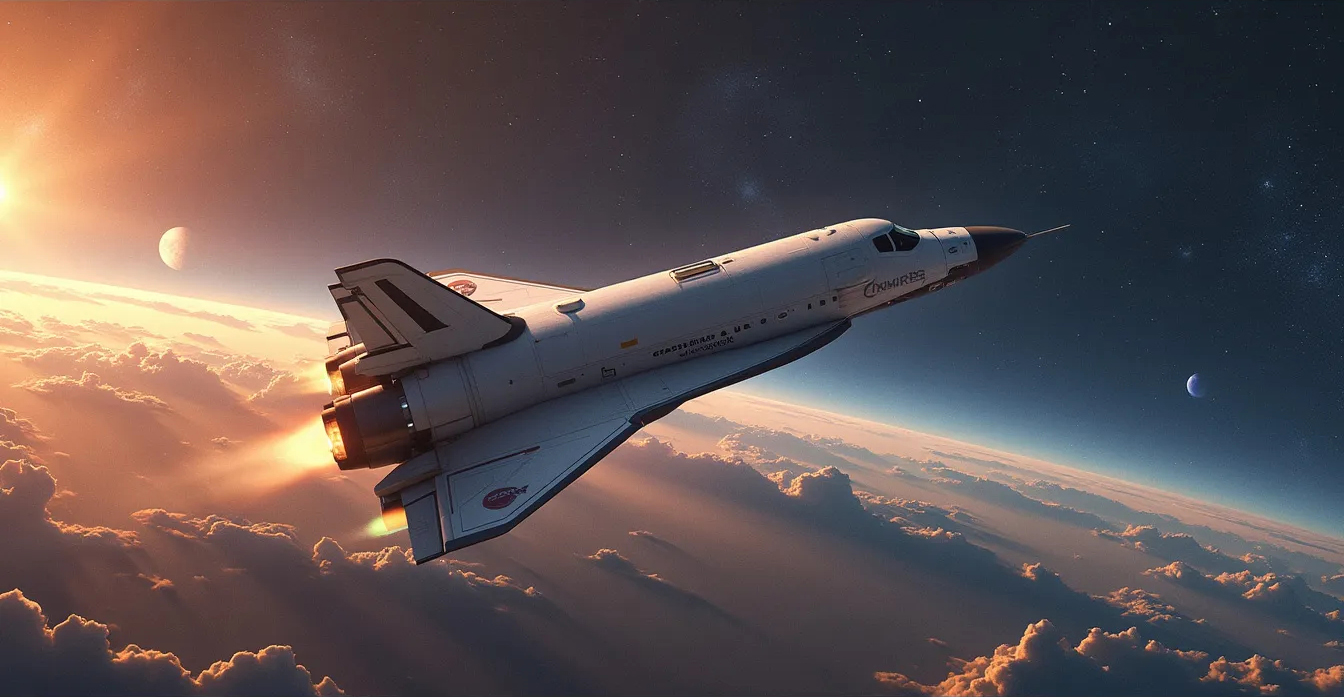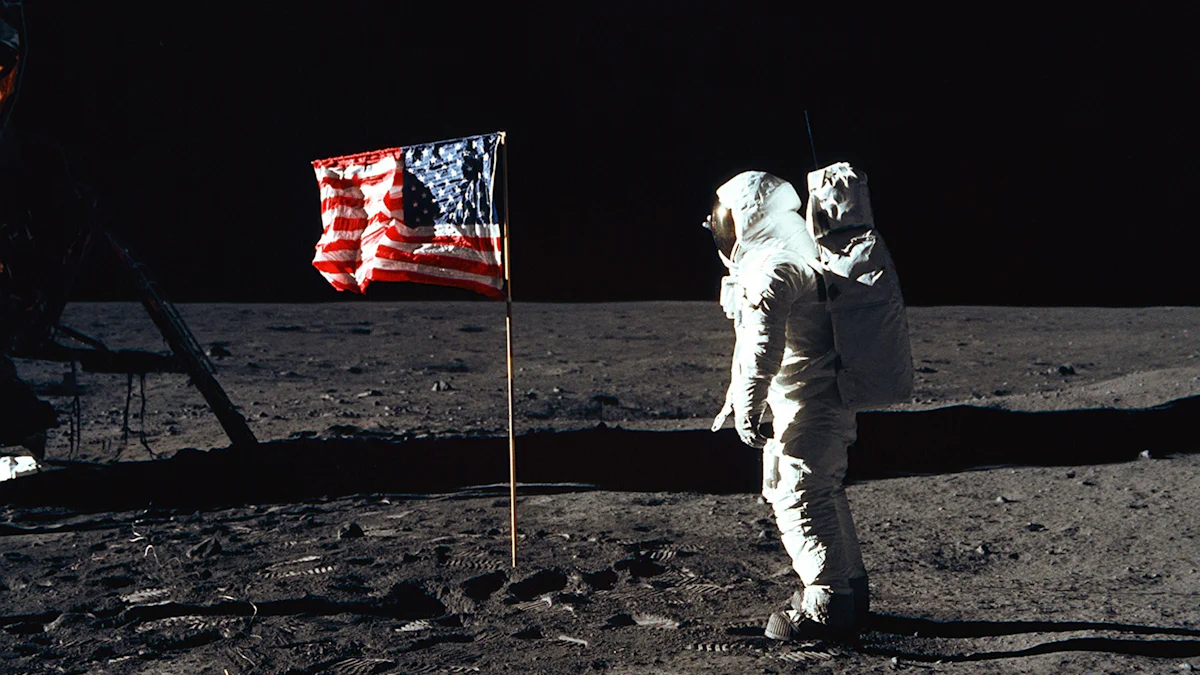Spaceflight: The Complete Story from Sputnik to Curiosity

Spaceflight stands as one of humanity's most remarkable accomplishments. The adventure commenced with the launch of Sputnik in 1957, heralding the beginning of a new age. This age revolutionized global communication and navigation through the deployment of orbiting satellites. The Apollo 11 mission, where Neil Armstrong took his historic steps on the Moon, remains a pivotal moment in history. Since November 2, 2000, the International Space Station has maintained a continuous human presence, driving technological progress. NASA's ongoing endeavors in sustainable human spaceflight continue to expand the frontiers of exploration. Space exploration captivates the imagination and inspires future generations.
The Dawn of Space Exploration
The Launch of Sputnik

The Space Race Begins
The launch of Sputnik in 1957 marked the beginning of the space age. This event initiated the Cold War space race between the United States and the Soviet Union. Both nations aimed to demonstrate technological superiority through space exploration. The Soviet Union achieved a significant milestone by launching the first artificial satellite. This achievement shocked the world and spurred the United States to accelerate its own space program. The competition fueled rapid advancements in rocket technology and space science.
Impact on Global Politics
Sputnik's launch had a profound impact on global politics. The event heightened tensions during the Cold War era. Nations recognized the strategic importance of space technology for military and communication purposes. Governments increased funding for scientific research and education to compete in the space race. The launch of Sputnik also led to the establishment of NASA in 1958. This agency became responsible for the United States' civilian space program and aeronautics research.
Early Human Spaceflight
Yuri Gagarin's Historic Flight
Yuri Gagarin made history as the first human to journey into outer space. On April 12, 1961, Gagarin orbited Earth aboard the Vostok 1 spacecraft. This achievement demonstrated the Soviet Union's prowess in human spaceflight. Gagarin's successful mission inspired awe and admiration worldwide. His flight emphasized the potential for humans to explore beyond Earth's atmosphere. The mission also intensified the space race, prompting the United States to prioritize sending an astronaut into space.
The Mercury and Vostok Programs
The Mercury and Vostok programs played crucial roles in early human spaceflight. The Soviet Union's Vostok program focused on sending cosmonauts into orbit. The United States developed the Mercury program to achieve similar goals. Alan Shepard became the first American in space on May 5, 1961, aboard the Freedom 7 spacecraft. John Glenn later became the first American to orbit Earth on February 20, 1962, during the Friendship 7 mission. These missions showcased the capabilities of both nations in human space exploration. The successes of these programs laid the groundwork for future endeavors, including the Apollo missions.
The Moon Landing Era

The Apollo Program
Apollo 11 and the First Moon Landing
Apollo 11 marked a monumental achievement in human history. On July 20, 1969, Neil Armstrong became the first person to step onto the Moon. This event captivated millions of viewers worldwide. The mission represented a significant victory for the United States in the space race. President John F. Kennedy's vision of landing a man on the Moon became a reality. The success of Apollo 11 demonstrated remarkable technological progress.
Scientific Discoveries from the Moon Missions
The Apollo missions provided valuable scientific insights. Scientists collected lunar rocks and soil samples. These samples revealed information about the Moon's composition and history. Researchers studied the Moon's surface features, including craters and volcanic plains. The missions helped scientists understand the Moon's formation and evolution. The data collected continues to inform current lunar research.
The Cultural Impact of the Moon Landings
Influence on Popular Culture
The Moon landings left a lasting mark on popular culture. Films, books, and music drew inspiration from these events. The phrase "one small step for man, one giant leap for mankind" became iconic. Television broadcasts of the landings reached audiences around the globe. The excitement of space exploration influenced art and storytelling.
The Legacy of Apollo
The legacy of the Apollo program endures today. The missions inspired future generations to pursue careers in science and engineering. NASA's achievements fostered a sense of national pride and unity. The program paved the way for future space exploration endeavors. The lessons learned continue to guide modern space missions. The spirit of exploration remains a driving force in human innovation.
Building a Presence in Space
The Space Shuttle Program
Reusable Spacecraft and Their Impact
The Space Shuttle Program introduced reusable spacecraft to spaceflight. Engineers designed the shuttle to launch like a rocket and land like an airplane. This innovation reduced costs and increased mission frequency. The program enabled frequent trips to low Earth orbit. Scientists and astronauts conducted various experiments during these missions. The shuttle's design allowed for the transportation of large payloads. Satellites, telescopes, and components for the International Space Station (ISS) were deployed using the shuttle.
Notable Shuttle Missions
Several missions highlighted the shuttle's capabilities. The launch of the Hubble Space Telescope expanded human understanding of the universe. Astronauts performed servicing missions to upgrade and repair Hubble. The shuttle also played a crucial role in constructing the ISS. Each mission contributed to building this international laboratory. The tragedies of Challenger and Columbia taught valuable lessons. Investigations led to improvements in safety and engineering practices. These missions demonstrated the shuttle's impact on space exploration.
The International Space Station
International Collaboration in Space
The ISS represents a monumental achievement in international collaboration. Agencies from the United States, Russia, Europe, Japan, and Canada partnered to build and operate the station. This cooperation fostered peaceful relations and shared scientific goals. The ISS serves as a symbol of unity in space exploration. Each participating nation contributes unique expertise and resources. The collaboration enhances technological development and innovation.
Scientific Research on the ISS
The ISS provides a unique environment for scientific research. Microgravity conditions allow for experiments not possible on Earth. Researchers study biology, physics, and materials science aboard the station. Experiments on the ISS lead to advancements in medicine and technology. The station's laboratories enable long-term studies of human health in space. Insights gained from this research support future missions to Mars and beyond. The ISS continues to expand human knowledge and capabilities in space.
Exploring the Solar System
Robotic Missions to Other Planets
The Voyager Probes
The Voyager Probes embarked on a journey to explore the outer planets. NASA launched Voyager 1 and Voyager 2 in 1977. These probes provided detailed images of Jupiter, Saturn, Uranus, and Neptune. Scientists gained insights into the atmospheres and moons of these planets. The probes continue to send data from beyond our solar system.
Mars Rovers and Their Discoveries
Mars rovers have transformed the understanding of the Red Planet. The Curiosity Rover collected radiation data to protect future astronauts. The Perseverance Rover discovered organic compounds on Mars rocks. These findings suggest potential past life on Mars. The rovers study Martian resources for future human missions.
The Search for Extraterrestrial Life
Missions to the Outer Planets
Missions to the outer planets seek signs of life. Scientists focus on moons like Europa and Enceladus. These moons may harbor subsurface oceans. Spacecraft study the chemical composition of these environments. The search aims to find conditions suitable for life.
The Role of Telescopes and Observatories
Telescopes and observatories play a crucial role in space exploration. Instruments like the Hubble Space Telescope observe distant galaxies. Observatories detect exoplanets in habitable zones. Researchers use these tools to search for extraterrestrial life. The data guides future missions and expands knowledge of the universe.
The Future of Space Exploration
Upcoming Missions to Mars
The Mars 2020 Mission and Perseverance Rover
NASA launched the Mars 2020 mission with the Perseverance Rover. This mission aims to explore the Martian surface. Scientists seek signs of ancient life on Mars. Perseverance collects rock and soil samples for future analysis. The rover's advanced instruments help study the planet's geology. Researchers hope to understand Mars' past climate and habitability.
Plans for Human Missions to Mars
Space agencies plan human missions to Mars. NASA and international partners work on technology development. Engineers design spacecraft for long-duration space travel. Life support systems must sustain astronauts on Mars. Scientists study the effects of spaceflight on human health. These efforts aim to achieve a successful human landing on Mars.
The Role of Private Companies in Spaceflight
SpaceX and the Commercialization of Space
SpaceX leads the commercialization of space. The company develops reusable rockets to reduce costs. SpaceX collaborates with NASA for crewed missions. The partnership enables more frequent access to space. Private companies drive innovation in space technology. This collaboration marks a new era in space exploration.
NASA: "NASA continues to enable the growth of commercial space age through public-private partnerships."
The Future of Space Tourism
Space tourism emerges as a new frontier. Companies like Blue Origin and Virgin Galactic offer suborbital flights. Tourists experience weightlessness and view Earth from space. National Geographic describes this as a "21st-century space race." The goal is to make space travel accessible and affordable. Future plans include orbiting space hotels and longer stays.
National Geographic: "Welcome to the 21st-century space race, one that could potentially lead to 10-minute space vacations, orbiting space hotels, and humans on Mars."
Space exploration stands as a testament to human ingenuity and ambition. The achievements from Sputnik to Curiosity highlight significant milestones in technology and science. Each mission expands the boundaries of knowledge and inspires future generations. The ongoing journey into space holds immense potential for humanity. NASA plans to return to the Moon, paving the way for human exploration of Mars and beyond. The future promises new discoveries and advancements. Humanity's quest for understanding continues to drive innovation and exploration. The anticipation of future milestones fuels excitement and curiosity.
See Also
Aviation: A Comprehensive Journey Through Flight History
Innovators: Tracing the Path from Ancient Structures to Space Exploration

